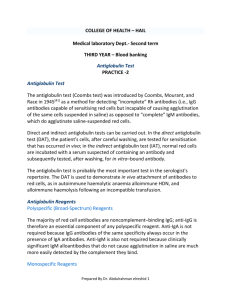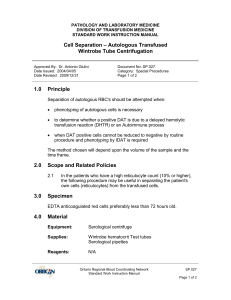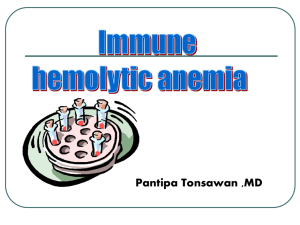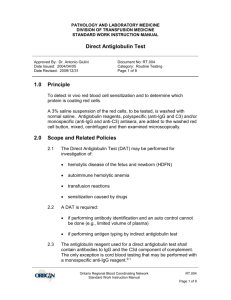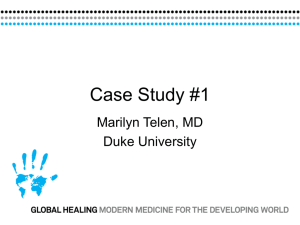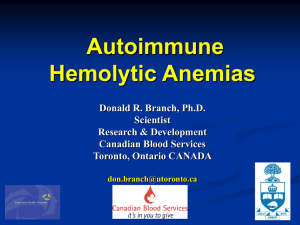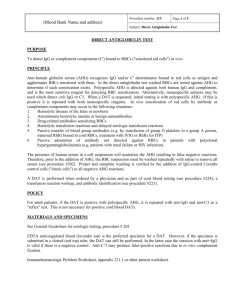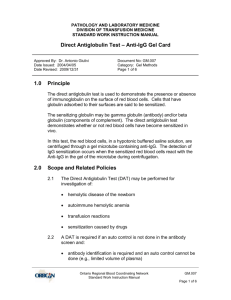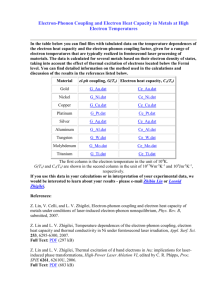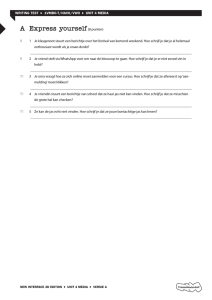Direct Antiglobulin Test
advertisement
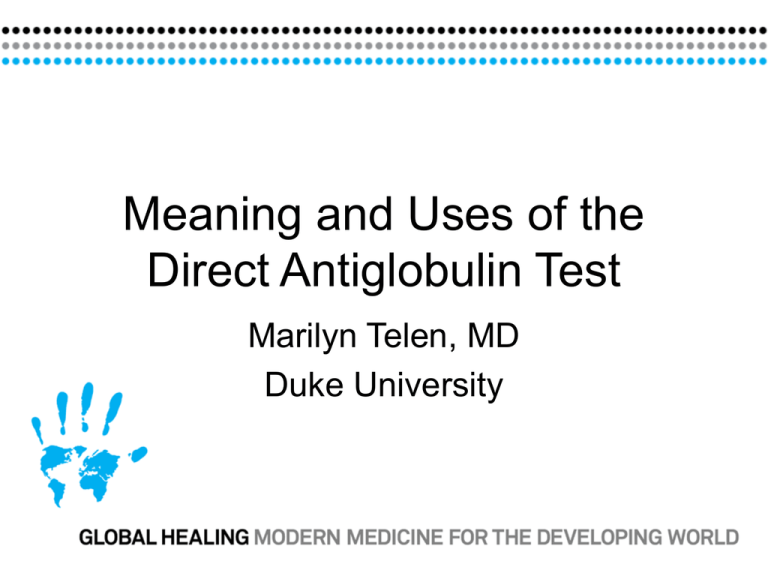
Meaning and Uses of the Direct Antiglobulin Test Marilyn Telen, MD Duke University Direct Antiglobulin Test • DAT • Direct Coombs test • Coombs test Direct Antiglobulin Test • Test for in-vivo coating of patient’s red blood cells with anti-IgG and/or complement • Washed patient’s red blood cells + polyspecific anti-human globulin (AHG: anti-IgG, anti-C3/C3d) – If positive, test red cells with 2 monospecific antibodies (anti-IgG and antiC3) – If IgG+ may remove (elute) antibody and test for specificity Autologous Control • Positive autocontrol on panel can mean: – Alloantibody coating donor (previously transfused) red cells – Autoantibody Direct Antiglobulin Test • Physician request – usually because immune-mediated hemolysis is suspected. • Positive DAT could mean: – Warm autoantibody – Cold autoantibody – Transfusion reaction – Hemolytic disease of the newborn – Drug induced antibody • • • • Drug adsorption - penicillin Immune complex Membrane modification Induced autoimmunity DAT in Autoimmune Hemolytic Anemia (AIHA) • Warm AIHA – 80% of all AIHA – – – – 99% have + DAT 20% have IgG only 67% have IgG + C3 13% have C3 only • Cold AIHA – 18% of AIHA – C3 only (antibody is IgM) • Paroxysmal Cold Hemoglobinuria – 2% of adult AIHA – C3 only or negative DAT Direct Antiglobulin Test • Transfusion Reaction work-up – DAT to detect antibody coating only donor cells in post sample • Immediate hemolysis – Prior work up missed detectable antibody • Delayed hemolysis – Antibody was below detectable levels on pretransfusion testing Direct Antiglobulin Test • Done with newborn type and screen – Hemolytic disease of the newborn • Maternal IgG antibody coating infant’s red cell – Anti-A, -B, -A,B – Alloantibody – Usually not due to Rh Immune Globulin Direct Antiglobulin Test • A positive DAT does not necessarily mean hemolysis is really occurring. • A large number of hospitalized patients (830%) have a positive DAT but no evidence of hemolysis. • Frequency of + DAT increases with concentration of immunoglobulin, and thus presence of inflammation. • About 1% of autoimmune hemolytic anemia will have a negative DAT. Direct Antiglobulin Test • Useful in confirming immune-mediated hemolysis from a variety of causes. • In combination with other tests, may help define cause of hemolysis. • NOT indicative of hemolysis by itself.

